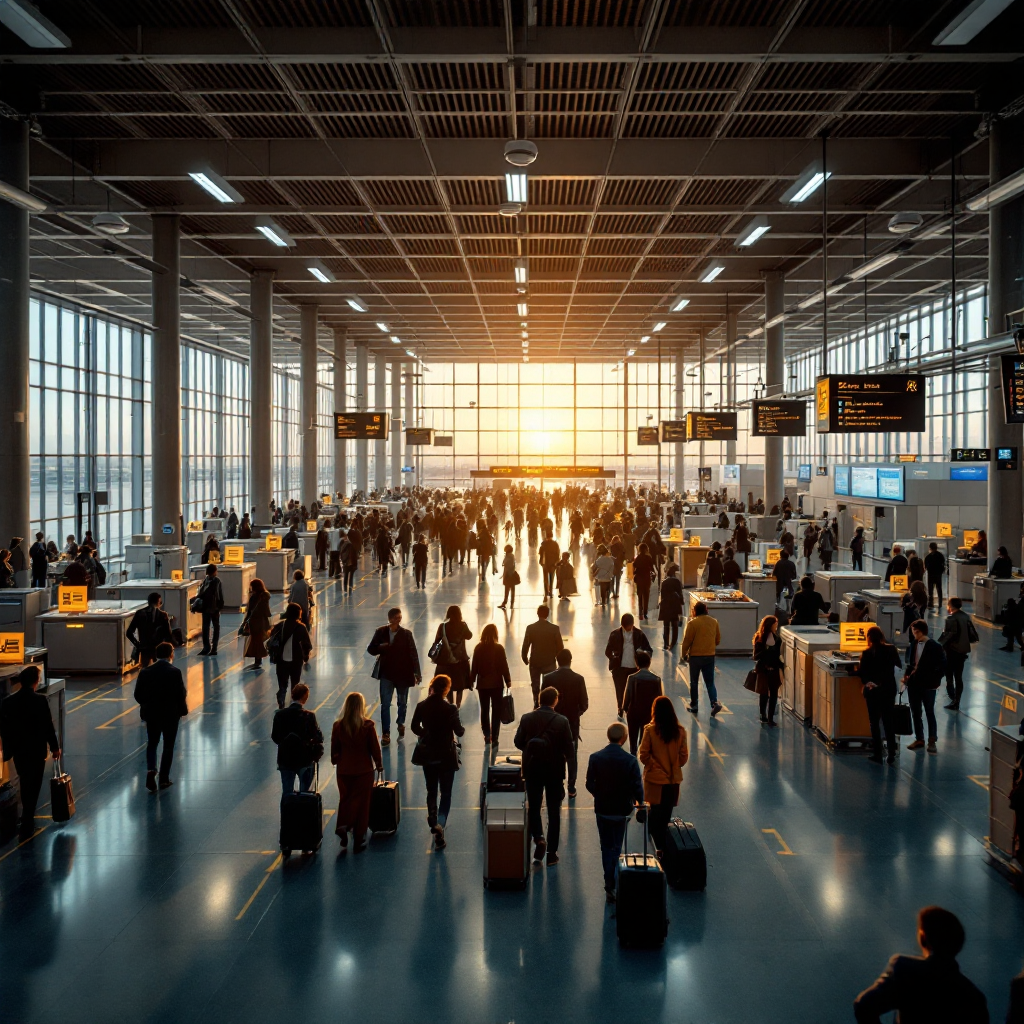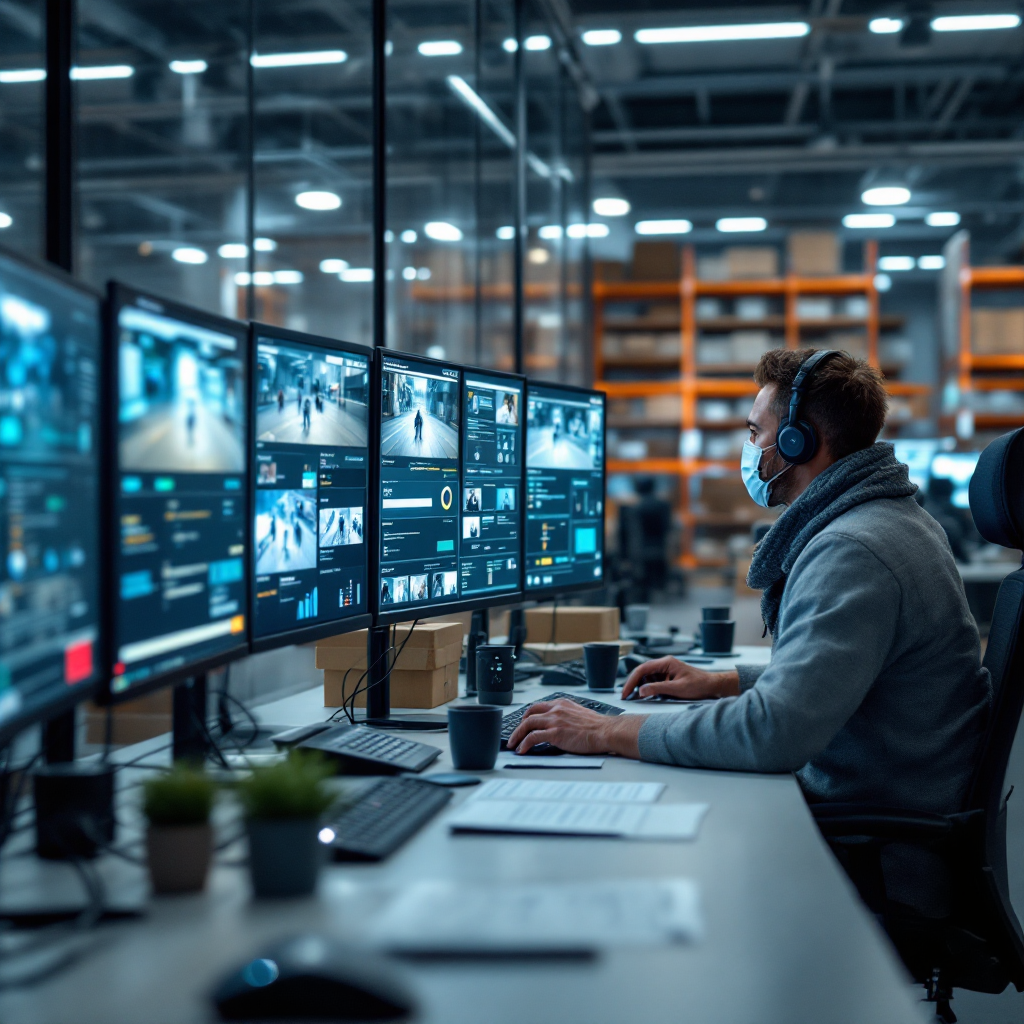Detection system using AI and video analytics to detect aggressive behavior in airport surveillance
Airports are high-density hubs. They require systems that spot risky conduct quickly. A detection system that combines AI and video analytics does this. It watches live feeds, flags rapid escalation, and sends an alert to teams on duty. Pattern recognition and behavioural analysis form the core of this approach. For instance, sudden clustering or repeated striking movements can be used to identify possible physical altercations. These rules run in parallel with learned patterns, so the platform learns what normal traffic looks like. Researchers report that vision-based systems can reach accuracy rates above 85% in controlled tests, which supports early intervention efforts (review on vision-based violence detection).
Systems like these combine object tracking and pose estimation. They also apply classifiers that score the likelihood of violent behavior. When that score crosses a threshold, the system will create an actionable event. Security personnel then receive that event in their workflow. In practice, AI models spot fights, shouting, or panic movements by measuring velocity, proximity, and repeated impacts. The models are trained with labelled footage, and they improve as more site-specific data is added. Visionplatform.ai helps sites leverage existing CCTV while keeping data on site and controllable, which can reduce false alarms and raise operational value.
Accuracy in lab settings often exceeds 85%, yet real-world performance varies by lighting, angle, and crowding. Still, airports that use these tools see meaningful reductions in violent behavior and faster response times. For example, smart surveillance projects report that visible security measures increase perceived safety by around 20% (study on perceived safety). This supports a proactive approach to passenger safety. In sum, AI-driven video analytics can detect aggressive behavior early, and they can integrate with control-room workflows to ensure a coordinated response.
Integration with existing security systems to detect aggressive behavior in real-time
Integration transforms detection into action. Alerts must flow into existing control-room dashboards, CCTV networks, and radios. When an alarm pops, operators need context. They need clip playback, location, and threat score. Systems that push structured events via MQTT or webhooks make this possible. Low-latency pipelines aim for sub-second flagging of suspicious actions, so teams can respond before an altercation escalates. Real deployments show that rapid, actionable alerts cut response time. One airport cut incident response by about 40% after deploying real-time AI, which demonstrates the value of tight integration (case on aggression, panic and abnormal behaviour detection).
Integration with existing VMS ensures minimal disruption. Visionplatform.ai converts ordinary CCTV into smart sensors, and then it streams events to security systems and operations. This method avoids vendor lock-in while keeping data local for GDPR and EU AI Act readiness. In practice, integration supports automatic camera targeting, intercom paging, and immediate dispatch of security personnel. A clear protocol helps. For example, a triggered event can create a priority ticket, open the nearest camera feed, and send a mobile push to on-shift staff. This automation reduces manual review time and lets officers focus on intervention.
Besides response speed, integration improves situational awareness. Teams can correlate aggression alerts with access logs, ANPR hits, or prior incidents. This is especially useful when an event could relate to criminal activities or coordinated threats. Airports gain better oversight, and they can ensure measured, lawful action. Training and clear protocol remain necessary, so teams know when to escalate and when to monitor. Finally, integrating with tools like people detection or weapon detection systems gives operators fused data, which strengthens decision-making and helps protect passengers.

AI vision within minutes?
With our no-code platform you can just focus on your data, we’ll do the rest
Surveillance systems environment analysis to enhance public safety in airport spaces
Environmental factors shape performance. Lighting, camera placement, and crowd density can change how well a model works. Low light reduces contrast and can drop detection accuracy. Strong backlighting hides faces and gestures. For that reason, a site survey is essential before deployment. Technicians map camera fields of view and identify blind spots. They also assess typical peak densities at check-in, security, and gates. Calibration then matches model thresholds to the terminal layout and expected flows.
To enhance detection, teams must feed diverse footage into training. This includes day, night, and high-density scenarios. Site-specific retraining reduces false alarms and bias. For example, a platform that uses your VMS footage to improve models will adapt to local signage, uniforms, and dress codes. Visionplatform.ai supports on-prem model tuning to keep training private and compliant with the EU AI Act. This local training also helps handle unusual environmental factors like reflective floors or glass-fronted facades.
Outcome metrics show real benefit. Airports that align cameras and tune models report measurable gains, including a rise in perceived safety among passengers of up to 20% (study on perceived safety). Better coverage also leads to more reliable identification of potential threats, especially when systems integrate crowd analytics with weapon detection or left-behind object tools. For more on people-focused analytics, see our guide to people detection in airports people detection in airports.
Finally, environmental analysis helps prepare for emergencies. Properly calibrated systems assist evacuation planning and real-time crowd control. They ensure cameras support both security protocols and passenger safety. When combined with clear operational procedures, these systems help guarantee safe passage through terminals and make airport spaces safer and more secure for travellers and staff.
Automate detection of vandalism and aggression through AI video analytics
Dual-mode systems extend value. They spot both vandalism and violent acts. For example, the same model that detects clustering and aggressive behavior can also tag acts like spray-painting or property damage. This widen the use-case beyond just physical altercations. When AI tags vandalism, teams can intervene faster, preserve evidence, and deter repeat offenders. Automation reduces the time staff spend watching footage and increases time they spend on prevention and response.
Systems tag events and attach relevant footage. That footage supports later review and prosecution if needed. Automating this process also frees patrols to focus on visible deterrence. When cameras stream structured events, operations teams can route incidents to the right teams. For example, a vandalism event might go to facility management and security, while a violent behavior alert goes directly to security personnel and police liaison. This targeted handoff improves outcomes.
In addition, automated tagging helps reduce false positives. Models trained on local footage learn to ignore benign actions like luggage adjustment or gate-side arguments. They instead escalate real alarms for physical altercations. Airports that automate detection of vandalism and aggression report fewer manual reviews, faster incident resolution, and better evidence trails. To see related use-cases, read about weapon detection and crowd analytics in transport hubs weapon detection in airports and crowd density analytics.

AI vision within minutes?
With our no-code platform you can just focus on your data, we’ll do the rest
AI-driven detection of abnormal behavior and aggression in public safety contexts
Defining “abnormal” is necessary. Abnormal can mean sudden dispersal, clustering, or direct threats to staff and travellers. AI uses historical patterns to distinguish normal movement from disruption. This reduces false alarms and increases trust in alerts. Historical data also supports bias mitigation by diversifying training sets. For example, models can learn typical flow patterns at specific gates and then notice deviations that might foreshadow violent behavior.
Using historical labels, systems reduce noise and improve precision. Airports that implement these methods report a drop in violent incidents by as much as 30% after deployment (case study on smart surveillance). These results show the power of combining automated detection with trained human oversight. Security personnel receive enriched context so that they respond confidently. This proactive approach can also mitigate secondary harms and help protect passengers.
When systems combine ANPR, facial recognition, and behaviour flags they gain greater fidelity. However, fusion must respect personal privacy and legal limits. That balance means keeping data local and auditable. Platforms that run on-prem help organisations meet compliance requirements while still providing advanced detection. In short, AI-driven abnormality detection helps mitigate risks, deter criminal activities, and create safer communities.
Airport environment challenges for surveillance systems to detect aggressive behavior
Operational constraints make detection hard. Overlapping cameras create redundant feeds. Busy check-in halls produce occlusion. Long security queues complicate tracking. Systems must handle these challenges without creating excess alarm fatigue. One approach is to combine multi-camera tracking with per-camera confidence scoring. This produces a single effective view for operators. It also reduces duplicate alerts for the same incident.
Privacy is another concern. Deployments must follow laws and respect personal privacy. Clear policy, retention limits, and oversight help. For example, keeping training and inference on-prem reduces data exposure and simplifies GDPR compliance. This design also helps with adoption since staff and passengers perceive safer and more secure operations. Security processes should be transparent and explainable. That way, operators can trust automated alerts and act within defined protocol.
Looking ahead, adaptive learning and biometric identification will refine accuracy. Integration with access-control and biometric systems offers context for escalation decisions. Yet, any wider use of facial recognition or biometric identification must be weighed against personal privacy and legal frameworks. Future systems will focus on transparent models, auditable logs, and clear operator controls so that airports can implement advanced technologies while ensuring passenger safety and the safety and security of passengers. These measures will help protect passengers, deter criminal activities, and support safe passage through aviation hubs.
FAQ
How do AI systems spot aggressive behavior in busy public places?
AI systems use pattern recognition and pose estimation to monitor movement and interactions. They learn normal flow from historical footage, then flag deviations that may represent aggressive behavior.
Are these systems accurate in real-world airport settings?
Accuracy in controlled tests often exceeds 85%, but real-world performance depends on lighting, camera placement, and crowd density. Well-calibrated systems and site-specific training improve real-world results.
How quickly are alerts delivered to security teams?
Well-integrated systems aim for sub-second flagging of suspicious actions and immediate delivery to control-room tools. Fast alerts enable quicker response and reduce the chance incidents escalate.
Can these systems detect vandalism as well as violence?
Yes, dual-mode solutions can tag property damage and violent acts. Automating tagging reduces manual review and frees staff to intervene where it matters most.
What privacy safeguards are recommended?
Keep training and inference local when possible, limit retention, and maintain auditable logs. Transparent protocols and oversight help ensure lawful, ethical use and reduce public concern.
Do these systems reduce the number of violent incidents?
Deployments have shown reductions in violent incidents, with some sites reporting up to a 30% drop. The mix of automated alerts and trained security personnel drives those improvements.
Can systems integrate with existing cameras and VMS?
Yes. Platforms that work with ONVIF/RTSP cameras and major VMS make integration straightforward. This lets operators leverage existing infrastructure without wholesale replacement.
How do models avoid false alarms caused by crowding?
Site-specific calibration and historical data help models distinguish between normal crowd surges and real threats. Retraining on local footage reduces false positives.
What happens after an alert is raised?
Alerts typically open the nearest camera feed, attach short footage clips, and route the event to the right teams. Protocols define when to escalate to police or medical teams.
Are there examples of measurable benefits?
Yes. Case studies show faster response times and higher perceived safety, including a roughly 20% rise in passenger confidence where visible, integrated security measures were used. For additional resources on related analytics, see our pages on people detection in airports and weapon detection in airports people detection and weapon detection.

